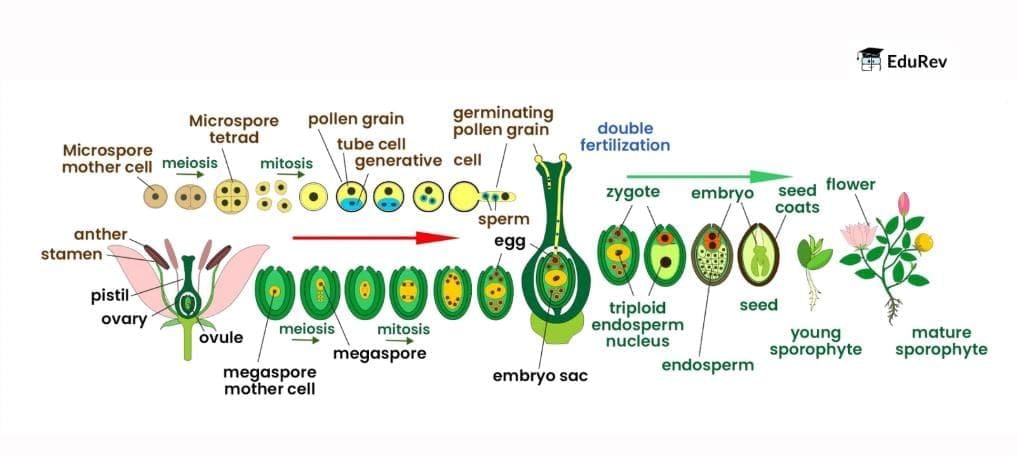NEET Exam > NEET Notes > Biology Class 12 > Infographic: Process of Double Fertilization
Infographic: Process of Double Fertilization | Biology Class 12 - NEET PDF Download

The document Infographic: Process of Double Fertilization | Biology Class 12 - NEET is a part of the NEET Course Biology Class 12.
All you need of NEET at this link: NEET
|
59 videos|290 docs|168 tests
|
FAQs on Infographic: Process of Double Fertilization - Biology Class 12 - NEET
| 1. What is double fertilization and why is it important in plants? |  |
Ans.Double fertilization is a unique process in flowering plants (angiosperms) where one sperm cell fertilizes the egg cell to form a zygote, while another sperm cell fuses with two polar nuclei to form a triploid cell, which develops into the endosperm. This process is crucial because it ensures that the developing embryo has a nutrient supply (from the endosperm) during its early growth, thereby increasing the chances of successful seed development and germination.
| 2. How does the process of double fertilization occur step by step? |  |
Ans.Double fertilization occurs in several steps:
1. Pollination occurs when pollen grains reach the stigma of a flower.
2. The pollen grain germinates, forming a pollen tube that grows down the style toward the ovule.
3. Two sperm cells travel down the pollen tube into the ovule.
4. One sperm fertilizes the egg cell, forming a diploid zygote.
5. The second sperm fuses with two polar nuclei, forming a triploid endosperm, which will provide nourishment to the developing embryo.
| 3. What role do the endosperm and the zygote play in seed development? |  |
Ans.The zygote develops into the embryo, which will eventually grow into a new plant. The endosperm, formed from the fusion of the second sperm with the two polar nuclei, provides essential nutrients to the embryo, supporting its growth and development until the seed can photosynthesize on its own after germination. This dual role is vital for the survival and establishment of the next generation of plants.
| 4. Are there any other organisms that exhibit a process similar to double fertilization? |  |
Ans.Double fertilization is primarily found in angiosperms (flowering plants). However, some gymnosperms and certain algae exhibit similar fertilization processes, although they do not form an endosperm in the same way. The concept of using two sperm cells for fertilization is unique to angiosperms, making it an important evolutionary adaptation for successful reproduction in this group of plants.
| 5. How is double fertilization relevant to agricultural practices and crop production? |  |
Ans.Understanding double fertilization is essential for improving crop production and agricultural practices. Knowledge of this process can help in developing hybrid plants with better nutritional profiles, higher yields, and improved resistance to environmental stresses. Furthermore, it aids in the study of plant breeding techniques, allowing for the selection of traits that enhance food security and agricultural sustainability.
Related Searches















